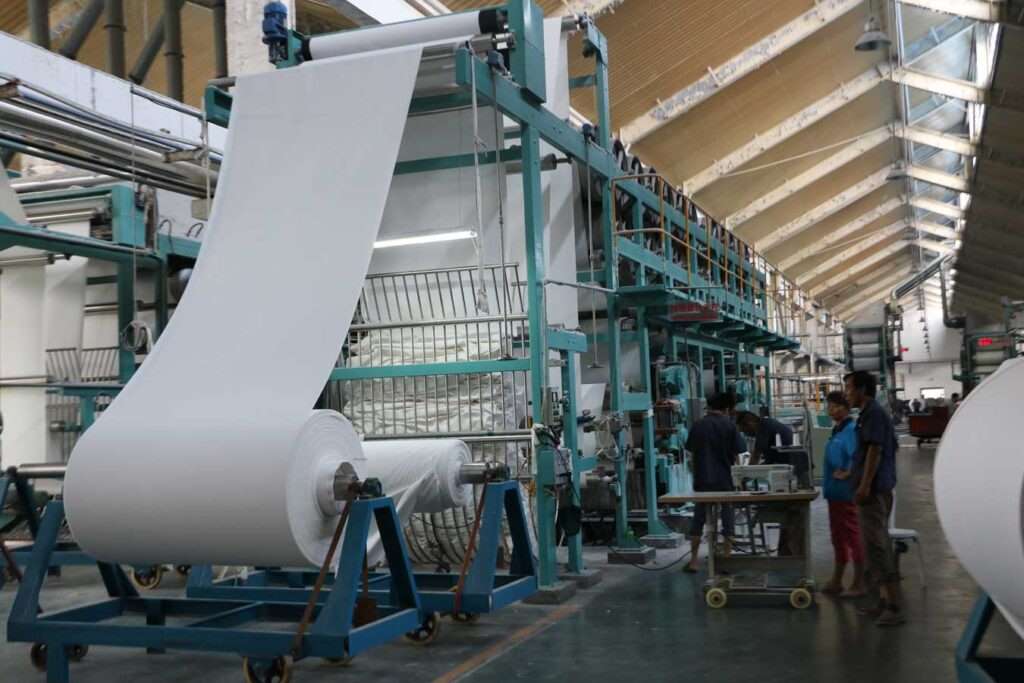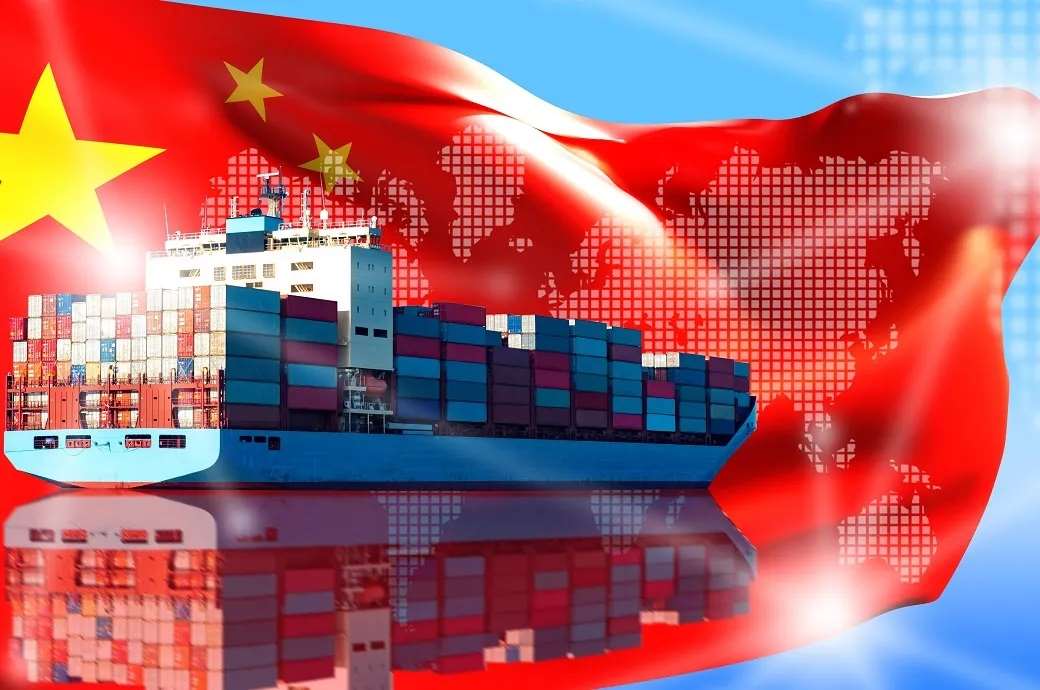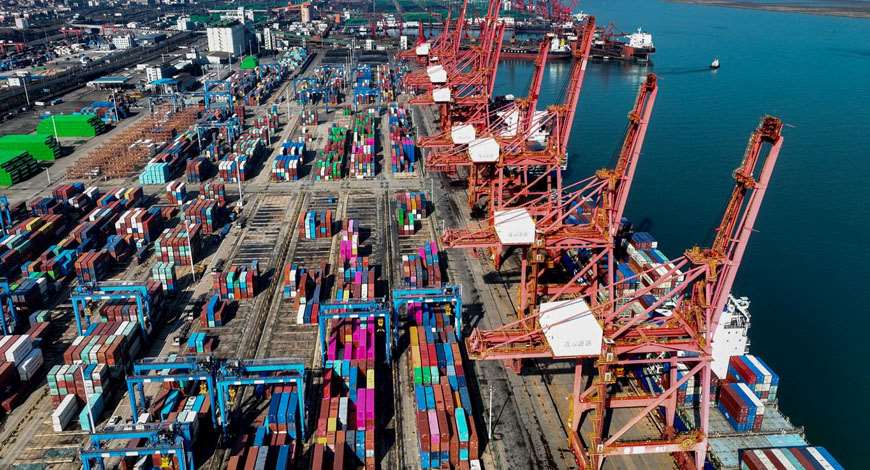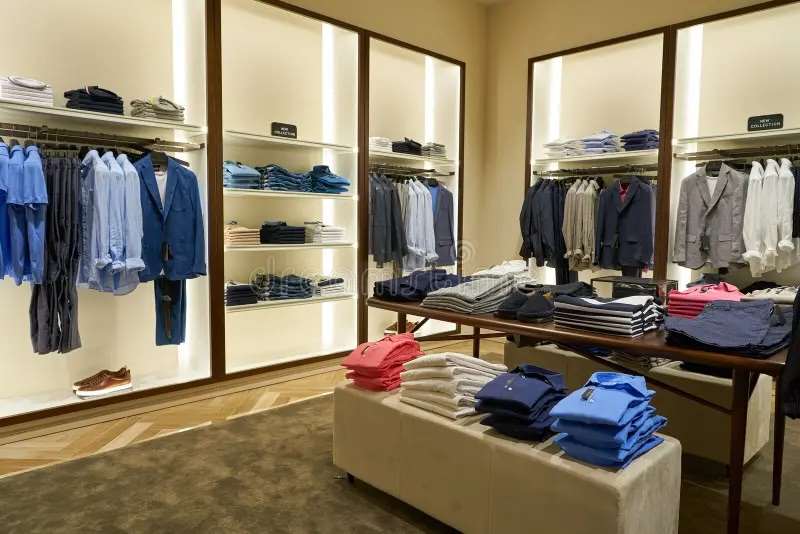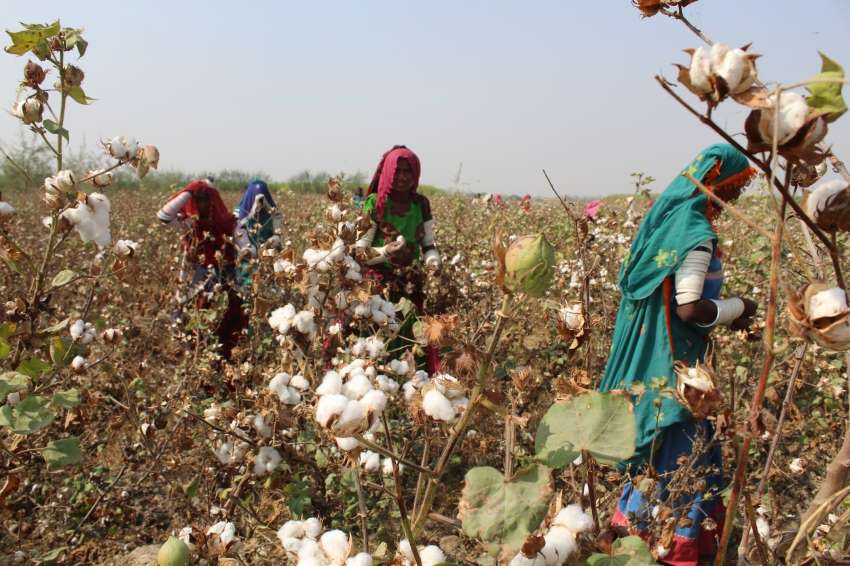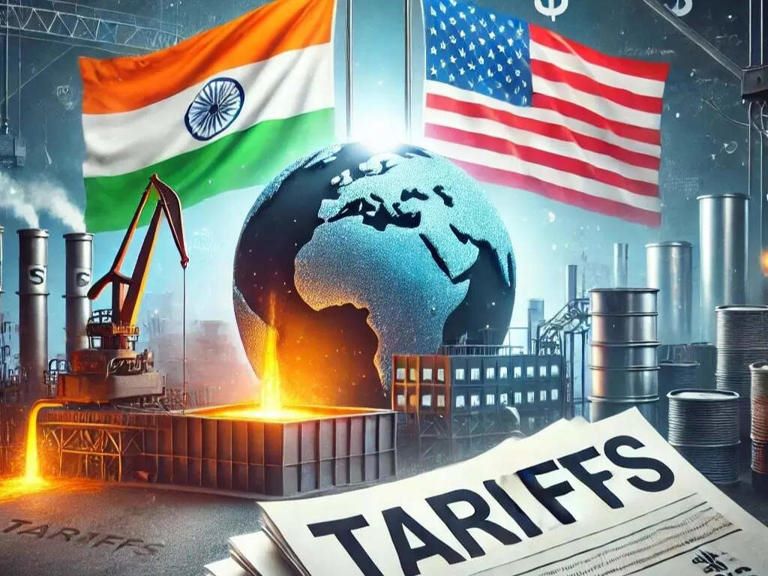FW
The UP government has launched several key initiatives to strengthen its textile and handloom sectors, benefiting weavers and entrepreneurs. It has allocated Rs 300 crore for establishing textile parks under the PM Mitra Yojana in the state. These state-of-the-art parks will integrate modern technology, reduce production costs, and enhance the industry’s competitiveness, positioning Uttar Pradesh as a leading textile hub on national and global platforms.
In another significant movement, the government has launched the Uttar Pradesh Textile-Garmenting Policy 2022 with an investment of Rs 150 crore earmarked in Budget 2025-26. Launched with an objective to accelerate the growth of the textile and apparel industry in the state, this policy aims to transform Uttar Pradesh into a major apparel manufacturing centre by, attracting investment and fostering entrepreneurship. It aims to develop the state into a textile powerhouse by creating a conducive environment for traditional weavers and emerging entrepreneurs
The UP Government has also introduced the Atal Bihari Vajpayee Powerlooom Flat Rate Scheme to address the challenges faced by powerloom weavers. Launched with a with a budgetary provision of Rs 400 crore, this initiative will help reduce production costs for weavers and boost their incomes by providing affordable electricity. The scheme aims to make the powerloom sector more competitive by addressing critical industry challenges.
Marking a new era for Uttar Pradesh’s textile, handloom, and apparel industries, these initiatives by the Yogi government are paving the way for a self-reliant textile sector while generating employment for lakhs. Emphasizing on the government’s commitment to revitalising the textile industry, these initiatives are helping foster innovation, boost productivity and create a favorable growth environment in the state.
Global apparel retailer Uniqlo is set to launch its highly anticipated Uniqlo U Spring/Summer 2025 collection on March 21, 2025. Designed by Christophe Lemaire and Sarah-Linh Tran, Co-Artistic Directors, the collection embraces a light and refreshing aesthetic, perfect for warmer weather.
Emphasizing soft pastel colors, including cream, yellow, grey, and white, the collection signals the arrival of spring. It features a vibrant pop of the color purple in key items like the Denim Bermuda Shorts and Shoulder Bag, adding a modern, eye-catching accent.
Prioritizing comfort and ease of movement, the collection incorporates lightweight fabrics ideal for layered styling. Exemplifying this approach, the Supima Cotton Sheer Long T-shirt and Oversized T-shirt offer versatile options for summer layering.
The collection also offers utility-focused items a like the men’s Hooded Blouson and women's Cotton Hooded Coat, both featuring adjustable hoods and striking silhouettes. Besides, it includes practical accessories, such as the water-repellent Shoulder Bag and UV Protection Hat for everyday comfort and functionality.
Featuring 20 women's items, 24 men's items, and three accessories, Uniqlo U SS25 collection is mostly designed to be genderless, reflecting a modern approach to fashion. The collection offers a blend of style, comfort, and practicality, making it a must-have for the upcoming season.
Italian women's fashion fair, White Milano concluded its latest edition, held from February 27 to March 2, 2025, with notable shifts in buyer demographics. While Italian buyer attendance at the event decreased by 12 per cent, aligning with industry trends, international buyers increased by 7 per cent, signaling a growing global interest in the fair.
This edition marked the launch of the MoU project in collaboration with the Retail Leader Circle with an aim to expand White Milano's presence in the Gulf and Middle East. This initiative will establish a permanent brand selection presence in Riyadh with the AlMalki group at Westerly, open three shops at the Yacht Club in Jeddah, launch pop-up shops with events in Abu Dhabi and Dubai, and open a pop-up shop at 51East in Doha by 2025-end.
The fair showcased 300 brands in the ‘New Luxury,’ segment with 55 per cent from Italy and 45 per cent from international markets, including emerging regions. This diverse representation highlighted the fair's increasing global reach and creative offerings.
White Milano attracted numerous international retailers, including prominent names from Egypt, Japan, China, the US, and the UAE. Featuring five international designers—Yid'Phrogma, Maz Manuela Alvarez, Carolxott, Oh Carla, and René, the The ‘Secret Rooms,’ were particularly well-received.
Massimiliano Bizzi and Brenda Bellei, President and CEO, MSeventy Group, emphasized the success of their strategy to expand internationally, citing the ‘Circle project’ and the upcoming ‘Purple project’ as examples. They expressed confidence in the growth potential of the ‘New Luxury’ segment and affirmed their commitment to pursuing similar international projects in future editions.
Despite a slowdown in the overall luxury market, the Prada Group reported a 17 per cent rise in net sales to €5.4 billion during 2024. Driven by the strength of its brands and a focus on product innovation and quality, the company's performance remained ‘well above the market average,
Prada Group’s profitability also increased during the year, with the EBIT margin rising to 23.6 per cent, resulting in an EBIT of €1.3 billion. The group’s net profit increased by 25 per cent to €839 million. Its retail sales increased by 18% to €4.8 billion. Miu Miu emerged as the standout performer, with retail sales rising 93 per cent, sales of the brand Prada increased modestly by 4 per cent. Geographically, Asia Pacific dominated growth with €1.6 billion in sales, followed by Europe with over €1.5 billion.
Attributing the group’s success to its focus on product innovation, quality and craftsmanship, Patrizio Bertellim, Chairman and CEO also highlighted the importance of investments in production capacity and industrial know-how. Andrea Guerra, CEO emphasized the strong growth trajectory of Prada and the increased visibility and scale of Miu Miu.
Looking ahead in 2025, the Prada Group aims to continue outperforming the market, despite the uncertain economic environment. The company remains committed to its strategic priorities, including strengthening its brand positioning, enriching its product portfolio, and enhancing customer engagement.
American retail corporation Target aims to achieve sales worth $15 billion by 2030. The company also plans to add 20 new stores this year besides investing $4-5 billion towards physical store expansions, enhancing online delivery, and streamlining supply chain.
Released during its annual investor meeting, Target’s Q4, FY25 results indicate a dip in sales and profits during the crucial holiday season. Executives attribute this to cautious consumer spending and warn of ‘meaningful pressure’ on profits due to tariffs imposed on goods from Mexico, Canada, and China. Brian Cornell, CEO cautions, consumers might witness a rise in prices ofc certain products. .
Despite these challenges, Target exceeded most quarterly earnings estimates. However, the company's sales declined in February due to severe weather and waning consumer confidence. Target anticipates flat sales for the year due to economic uncertainty.
Tariffs and trade tensions, particularly with China, are significantly impacting Target's operations. The company is accelerating efforts to diversify its sourcing, reducing its reliance on China from 60 per cent in 2017 to a projected 25 per cent by the end of next year. It is also shifting sourcing to countries like Guatemala and Honduras and exploring domestic options.
Target is also strategically adjusting its pricing to mitigate the impact of rising costs. The company focuses on maintaining affordability for essential items while adjusting prices on products with greater flexibility. This approach helps balance profitability with consumer affordability.
Exceeding Wall Street expectations, Target reported a net income of $1.1 billion in FY24. For the current year, the company forecasts earnings per share of $8.80 to $9.80. It remains cautiously optimistic, despite the economic challenges, expecting net sales to increase by 1 per cent this year.
The Regenerative Cotton Standard (RCS) is already delivering positive results in Maharashtra, India, after just one harvest. With higher yields, lower costs, and growing adoption of regenerative agriculture, the initiative is proving both effective and feasible.
Last season, 5,000 farmers across 70 villages cultivated RCS cotton, harvesting 4,400 tonnes of ginned cotton. Yields rose by 2 percent, while costs fell by 7 percent, boosting farmer incomes. Soil regeneration efforts, including biochar application, further improved results demonstration fields using biochar achieved a 15 percent higher yield than conventional cotton farming. Meanwhile, 90 percent of farmers found the training methodology effective.
To ensure success, the project involved local leaders, lead farmers, and community groups. Farmers received training in cover cropping, crop rotation, and organic nutrient management. Field demonstrations and workshops helped build confidence in RCS methods. The initiative was implemented by Aid by Trade Foundation (AbTF) and Vijay Cotton & Fibre CO. LLP, alongside 40 agricultural consultants.
“With its holistic approach and focus on farmer experiences, RCS is a winning proposition,” said Tina Stridde, AbTF’s managing director. “This pilot project has shown real potential to help farmers regenerate soils, increase incomes, and secure their future despite climate challenges.”
Beyond farming benefits, RCS enhances textile supply chain transparency using AbTF’s tracking system, helping meet industry traceability demands. The pilot, which began in July 2024, will continue, while Tanzania is also entering its second season under RCS.
Nemo’s best-selling Dagger Osmo tent is now more spacious and sustainable, earning the Bluesign Product designation. This marks a major milestone in eco-friendly tent design, reinforcing Nemo’s commitment to clean chemistry and responsible manufacturing.
The 2025 Dagger Osmo is crafted with solution-dyed, 100 per cent recycled, PFAS- and flame-retardant-free fabrics, reducing environmental impact while maintaining high performance. Traditionally, backpacking tents rely on chemical treatments for durability, but Nemo’s Osmo fabric delivers lightweight, water-resistant, and UV-resistant performance without harmful substances.
The updated tent features a more livable interior without added weight, thanks to Nemo’s custom Elements hardware. The Axial corner anchor streamlines setup, while the Stash volumizing strut expands vestibule storage by 22 per cent. The Divvy Cube makes packing easier and more efficient for shared loads. Available in 2- and 3-person models, the Dagger Osmo weighs just 3 lbs., 5 oz (2P) and retails at $499.95.
“In 2023, our team set out to push Dagger’s sustainability further, creating the industry’s first Bluesign tent,” said Gabi Rosenbrien, Product Development Director at Nemo. “This required working closely with suppliers to meet strict performance and chemical standards.”
Daniel Rufenacht, CEO of Bluesign, praised Nemo for setting a new sustainability benchmark in outdoor gear. “By prioritizing clean chemistry, Nemo proves that performance and responsible manufacturing can go hand in hand.”
Sportswear and footwear retailer, Foot Locker projects its comparable sales will rise between 1 per cent and 2.5 per cent in 2025. The company plans to either open or convert additional 80 reimagined stores by the end of the year.
In Q4, FY24, Foot Locker’s sales declined by 5.8 per cent to $2,243 million as compared to sales worth $2,380 million in Q3, FY23.
The retailer’s comparable sales increased by 2.6 per cent during the quarter. The combined comparable sales of its brands Foot Locker and Kids Foot Locker rose by 3.6 per cent while sales of Champs Sports expanded by 1.8 per cent. However, these gains were partially offset by the 3.3 per cent decline in comparable sales of WSS.
Foot Locker’s net income from continuing operations increased to $55 million during the quarter as against a net loss of $389 million in the prior-year period.Foot Locker opened seven new stores while closing 47 stores during the quarer. It either remodeled or relocated 21 of its stores while renovating 160 stores to updated design standards.
The company currently operates 2,410 stores in 26 countries across North America, Europe, Asia, Australia, and New Zealand, as well as 224 licensed stores in the Middle East, Europe, and Asia.
In Q4, FY24, Foot Locker exceeded its previously revised expections with investments and execution driving positive comparable sales and also improving gross margins compared to the prior year, says Mary Dillon, President and CEO.
Enhancing its in-store experience for customers, Foot Locker introduced reimagined doors and store refresh program in 2024. The company upgraded its digital and mobile capabilities, expanded engagement with the FLX Rewards Program, and enaged into brand building through compelling campaigns and partnerships, adds Dillion.
Edana has announced the three finalists for the Filtrex Innovation Award 2025, recognizing innovative advancements in the filtration industry. The nominees are:
Gessner introduces an eco-friendly filter media replacing fossil-based resins with renewable lignin, reducing crude oil use by up to 100 kilograms per ton. Designed for engine air, oil, and fuel filters, it offers high performance, durability, and lower formaldehyde emissions.
NanoWave ESA is a 3D all-synthetic media designed for high-efficiency respiratory protection. PFAS-free and stretchable, it enables breathable, drapable garments while minimizing media processing and extending filter life.
Johns Manville’s innovative recycling process transforms HVAC bio-soluble glass microfiber waste into pellets for injection molding. With 30 per cent glass fiber content, these pellets create durable second-life products, reducing landfill waste and carbon dioxide emissions.
Each finalist will present their innovation at Filtrex 2025, held on March 25-26 in Vienna, Austria. Attendees will vote for the winner, announced at the end of the first day.
Since 2004, Filtrex has been a premier event for the filtration sector, bringing together industry leaders to discuss market trends, advanced materials, and testing developments.
Reinforcing their commitment to promoting sustainably produced cotton, Better Cotton and Cotton Australia have renewed their strategic partnership until 2027. This agreement ensures continued collaboration and alignment between the two organizations.
Cotton Australia's ‘my Best Management Practice’ (myBMP) Standard has been recognized as equivalent to the Better Cotton Standard System (BCSS), since 2014, allowing Australian farmers to market their cotton as ‘Better Cotton’ globally. In the 2023/24 season, Australian farmers produced over 400,000 metric tons of Better Cotton, representing 40 per cent of the nation's total cotton output.
A significant contributor to the economy, the Australian cotton industry employs over 10,000 people and generating more than AU$3.5 billion annually in export revenue.
Cotton Australia has successfully aligned its myBMP Standard with Better Cotton's updated Principles & Criteria (P&C) v.3.0. The revised myBMP Standard will be fully implemented by the 2025/26 cotton season.
Better Cotton requires regular reassessment and realignment of partner standards to maintain equivalence with the BCSS. This ensures that both standards evolve to support farmers in meeting the increasing market demand for sustainable cotton.

